Anu: Supreme Ruler Of The Heavenly Abode In Sumerian Pantheon Of Gods
A. Sutherland - AncientPages.com - The Sumerian pantheon included many deities but initially, the most important of them were Anu, Enlil, Enki, and Ninhursag. In this article, we present Anu (also known as An), the Great Father of the Sky who belonged to the oldest generation of Mesopotamian gods.
Cuneiform texts including Sumerian creation accounts and the Babylonian epic Enuma Elish are the main sources that give us knowledge about Anu who had many titles such as lord of constellations, king of gods, spirits, and demons.
In the Assyrian-Babylonian pantheon, he was both, the god of kingship as well as the ruler of heaven.
Anu’s Sumerian cult center was White Temple in the sacred precinct of Kullaba at Uruk (today modern Warka); he was also worshiped in Ur and Lagash.
At first, Anu was the most powerful of the gods, and all the others in the Sumerian Pantheon treated whim respectfully, as he was a great authority; however, he rarely showed up in the myths and hymns of Mesopotamia.
Anu has always been portrayed as being very distant from ordinary people and their daily concerns. It was understood that as a supreme ruler, he must have had other, much more important matters to attend to.
In heaven, he had power over other gods and decided about their functions, privileges, and responsibilities, increasing their status at will. On earth, he discussed kingship, and his decisions were regarded as permanent.
The oldest texts do not mention the origin of Anu. In the Babylonian creation myth Enuma Elish (Tablet I, 11-14)), there is a mention that Anu was the son of a primordial god, Anshar ("whole heaven"), and his consort, Kishar ("whole Earth").
1. When in the height heaven was not named,
2. And the earth beneath did not yet bear a name,
3. And the primeval Apsû, who begat them,
4. And chaos, Tiamat, the mother of them both,—
5. Their waters were mingled together,
6. And no field was formed, no marsh was to be seen;
7. When of the gods none had been called into being,
8. And none bore a name, and no destinies [were ordained];
9. Then were created the gods in the midst of [heaven],
10. Lahmu and Lahamu were called into being [...].
11. Ages increased, [...],
12. Then Anshar and Kishar were created, and over them [...].
13. Long were the days, then there came forth [...]
14. Anu, their son... [...]
Anu is often mentioned as the "father of gods," because many Sumerian deities are considered to be his children. This of course depends on the literary sources, but we find the names of Enki, Nanna, Enlil, Inanna, Nanaya, and many others. The first known recording of his name occurs on the inscription of Mesanepada, King of Ur, which reads "Young man, chosen by Ana". This inscription dates from around 2,700 - 2,600 BC.
With the passage of time, this supreme god became a rather obscure character in the Sumerian pantheon. Eventually, his position was taken over by his son Enlil, Lord of the Winds, Marduk, and the goddess Inanna.
Mesopotamian gods were shown in human form and accompanied by their sacred beasts and so was also Anu whose animal was a bull. Anu‘s insignias were: the Scepter, symbolizing power, the tiara, his divine headdress, and the staff provided by the shepherd.
It is believed that Anu was symbolically depicted on seals and seal impressions from 3.000 BC onward. Otherwise, Anu was rather seldom represented in art, except for Kassite and Neo-Assyrian art, in which his symbol was a horned cap.
He was worshiped from about 3500 BC to 2000 BC and continuously as Babylonian creator god until 100 BC or later. There were many temples scattered through Mesopotamia devoted to Anu.
Written by – A. Sutherland AncientPages.com Staff Writer
Copyright © AncientPages.com All rights reserved. This material may not be published, broadcast, rewritten or redistributed in whole or part without the express written permission of AncientPages.com
Expand for referencesReferences:
Kramer, S. N. Sumerian Mythology
Macleod, Kezip. Legends of Sumer
More From Ancient Pages
-
 Rare Bulla (Seal) And 2,600-Year-Old Stamp With Biblical Name Unearthed In City Of David
Archaeology | Apr 3, 2019
Rare Bulla (Seal) And 2,600-Year-Old Stamp With Biblical Name Unearthed In City Of David
Archaeology | Apr 3, 2019 -
 Undiscovered Neanderthal Artifacts From The Ice Age Are Submerged Below The Waves Of The English Channel
Archaeology | Nov 23, 2022
Undiscovered Neanderthal Artifacts From The Ice Age Are Submerged Below The Waves Of The English Channel
Archaeology | Nov 23, 2022 -
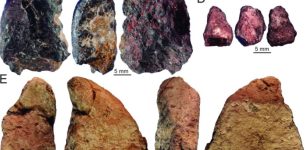 Homo Sapiens In China And What Happened When They Encountered Denisovans Or Neanderthals
Archaeology | Mar 4, 2022
Homo Sapiens In China And What Happened When They Encountered Denisovans Or Neanderthals
Archaeology | Mar 4, 2022 -
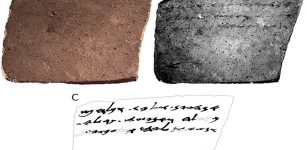 Unseen 3,000-Year-Old Inscription On Biblical-Era Piece Of Pottery Deciphered By Researchers
Archaeology | Jun 21, 2017
Unseen 3,000-Year-Old Inscription On Biblical-Era Piece Of Pottery Deciphered By Researchers
Archaeology | Jun 21, 2017 -
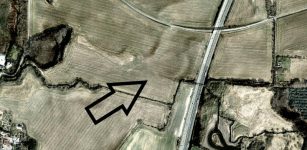 Archaeologists Uncover Secrets Of ‘Vallø Borgring’ Viking Age Circular Fortress
Archaeology | Oct 11, 2015
Archaeologists Uncover Secrets Of ‘Vallø Borgring’ Viking Age Circular Fortress
Archaeology | Oct 11, 2015 -
 Meet The First Neanderthal Family And Community
Archaeology | Oct 19, 2022
Meet The First Neanderthal Family And Community
Archaeology | Oct 19, 2022 -
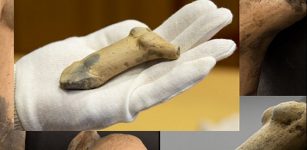 Fragments Of 6,500-Year-Old Figurine Of ‘Venus of Egerszeg’ – Unearthed
Archaeology | Jul 21, 2020
Fragments Of 6,500-Year-Old Figurine Of ‘Venus of Egerszeg’ – Unearthed
Archaeology | Jul 21, 2020 -
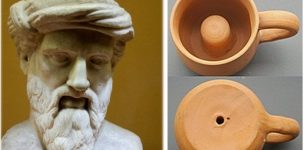 Pythagorean Cup Was A Practical Joke To Punish Greedy Drinkers And It Still Fools People
Ancient History Facts | Dec 18, 2020
Pythagorean Cup Was A Practical Joke To Punish Greedy Drinkers And It Still Fools People
Ancient History Facts | Dec 18, 2020 -
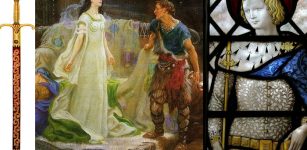 Curtana – Sword Of Mercy Once Belonged To The Anglo-Saxon King Edward The Confessor And Perhaps Even The Arthurian Hero Tristan
Artifacts | Jul 16, 2017
Curtana – Sword Of Mercy Once Belonged To The Anglo-Saxon King Edward The Confessor And Perhaps Even The Arthurian Hero Tristan
Artifacts | Jul 16, 2017 -
 Nalanda – One Of The Most Praised Learning Centers And Masterpiece Of Ancient World
Featured Stories | Aug 24, 2015
Nalanda – One Of The Most Praised Learning Centers And Masterpiece Of Ancient World
Featured Stories | Aug 24, 2015 -
 Nebuchadnezzar II – Greatest Ruler Of Ancient Babylonia And Conqueror Of Judah
Featured Stories | Jan 28, 2019
Nebuchadnezzar II – Greatest Ruler Of Ancient Babylonia And Conqueror Of Judah
Featured Stories | Jan 28, 2019 -
 Mount’s Bay, Lyonesse, Langarroc: Legendary Submerged Lands And Buried Towns Of Cornwall
Featured Stories | Apr 21, 2022
Mount’s Bay, Lyonesse, Langarroc: Legendary Submerged Lands And Buried Towns Of Cornwall
Featured Stories | Apr 21, 2022 -
 Enigmatic Newport Tower – Built By The Vikings, Knights Templar, Freemasons Or Someone Else?
Featured Stories | Aug 1, 2024
Enigmatic Newport Tower – Built By The Vikings, Knights Templar, Freemasons Or Someone Else?
Featured Stories | Aug 1, 2024 -
 Ancient Textile Mystery: King Canute Enshrined In His Own Clothes But Found In His Brother’s
Artifacts | Oct 5, 2020
Ancient Textile Mystery: King Canute Enshrined In His Own Clothes But Found In His Brother’s
Artifacts | Oct 5, 2020 -
 Sacred Mount Meru: Home Of The Gods And Center Of The Universe
Featured Stories | Feb 7, 2019
Sacred Mount Meru: Home Of The Gods And Center Of The Universe
Featured Stories | Feb 7, 2019 -
 On This Day In History: Battle Of Ayacucho Was Fought In Peru – On Dec 9, 1824
On This Day In History | Dec 9, 2016
On This Day In History: Battle Of Ayacucho Was Fought In Peru – On Dec 9, 1824
On This Day In History | Dec 9, 2016 -
 Forbidden Knowledge: Secret Ancient Gates Of The Shining Ones – Geomantic Energy Vortices – Part 2
Ancient Mysteries | Jul 16, 2019
Forbidden Knowledge: Secret Ancient Gates Of The Shining Ones – Geomantic Energy Vortices – Part 2
Ancient Mysteries | Jul 16, 2019 -
 Lemminkainen: Mythical War-Hero Of Finnish Great Epic ‘Kalevala’
Featured Stories | Oct 14, 2016
Lemminkainen: Mythical War-Hero Of Finnish Great Epic ‘Kalevala’
Featured Stories | Oct 14, 2016 -
 Mysterious Ancient European Cloaked Individuals – Who Were These Perplexing Beings?
Featured Stories | Mar 15, 2025
Mysterious Ancient European Cloaked Individuals – Who Were These Perplexing Beings?
Featured Stories | Mar 15, 2025 -
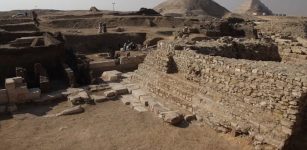 Pyramid Of Unknown Ancient Egyptian Queen And Hundreds Of Mummies Discovered In Saqqara
Archaeology | Nov 17, 2022
Pyramid Of Unknown Ancient Egyptian Queen And Hundreds Of Mummies Discovered In Saqqara
Archaeology | Nov 17, 2022


